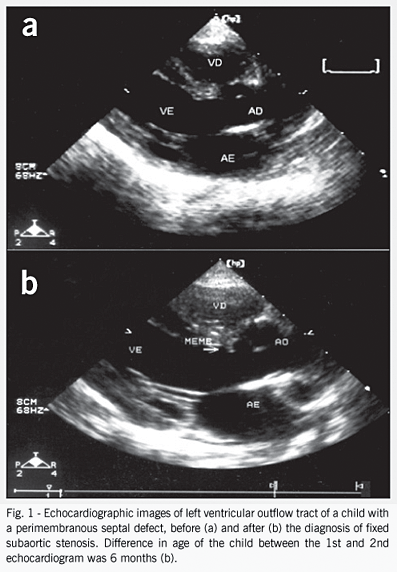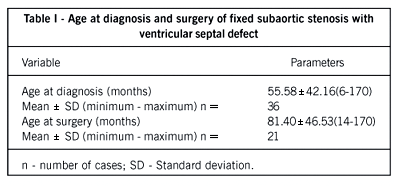OBJECTIVE: To study the clinical pattern of subaortic stenosis associated with perimembranous ventricular septal defect. METHODS: From January 1979 to June 2000, 36 children with perimembranous ventricular septal defect and fixed subaortic stenosis were followed-up regarding anatomic characteristics, evolvement, and clinical events. RESULTS: Age at diagnosis of subaortic stenosis ranged from 6 months to 170 months, and it was less than 1 year in only 2 children. Regarding sex, the distribution was 2:1 with a greater predominance of males. Ventricular septal defect was small in 61.0% of cases, medium in 30.56%, and large in 8.40%; the size of the septal defect decreased during follow-up in 30.56% (11 cases). In all patients, subaortic stenosis was membranous and fixed. During follow-up, 23 patients experienced evolvement of the stenosis. Surgical treatment was performed in 21 cases, and one patient underwent surgery for restenosis. Infectious endocarditis occurred in 2 patients; one of the patients died. CONCLUSION: Subaortic stenosis occurs in the natural history of ventricular septal defect usually after the first year of life, and it is progressive and requires surgery in most cases.
ventricular septal defect; subaortic stenosis; congenital heart disease; endocarditis







